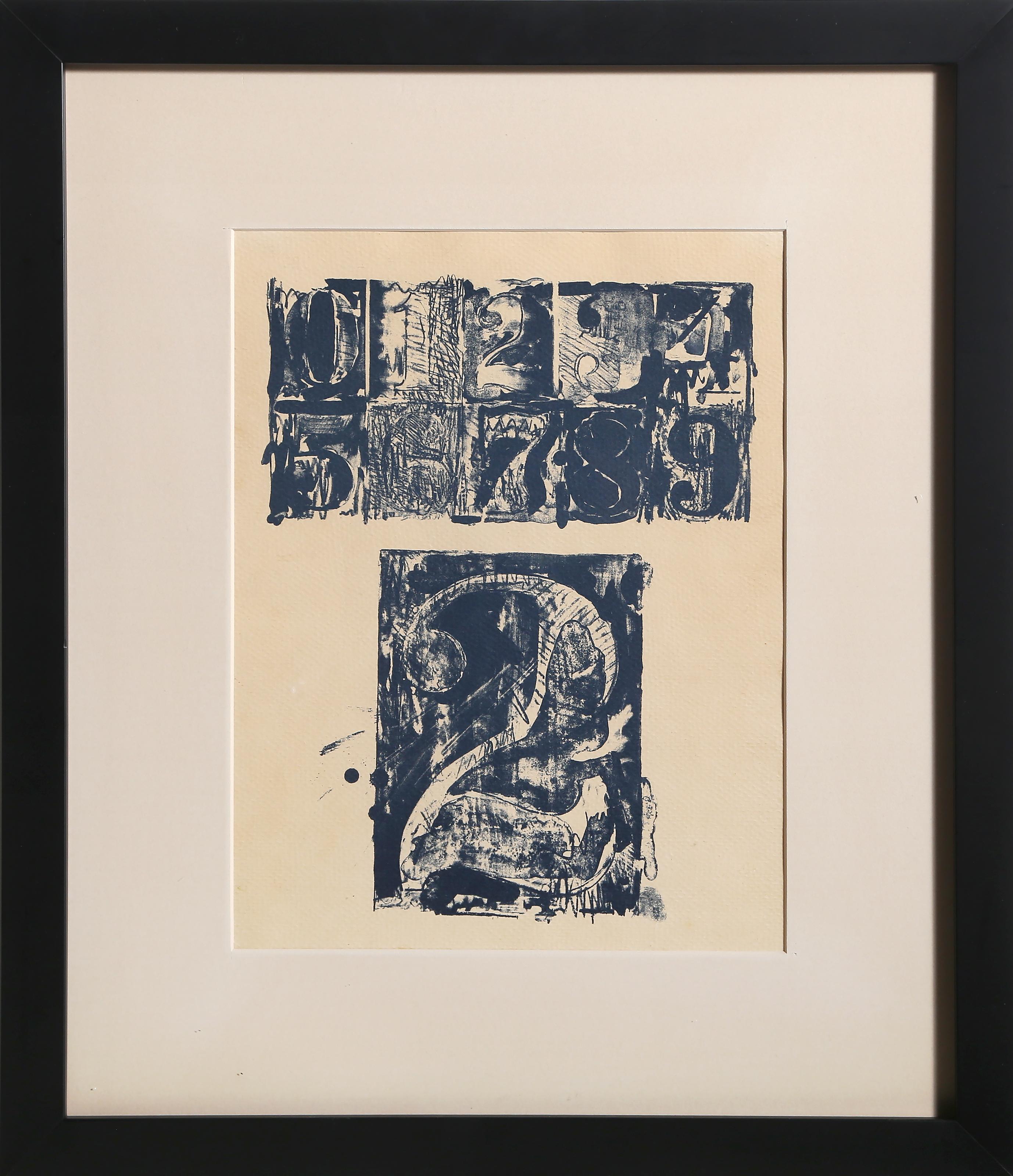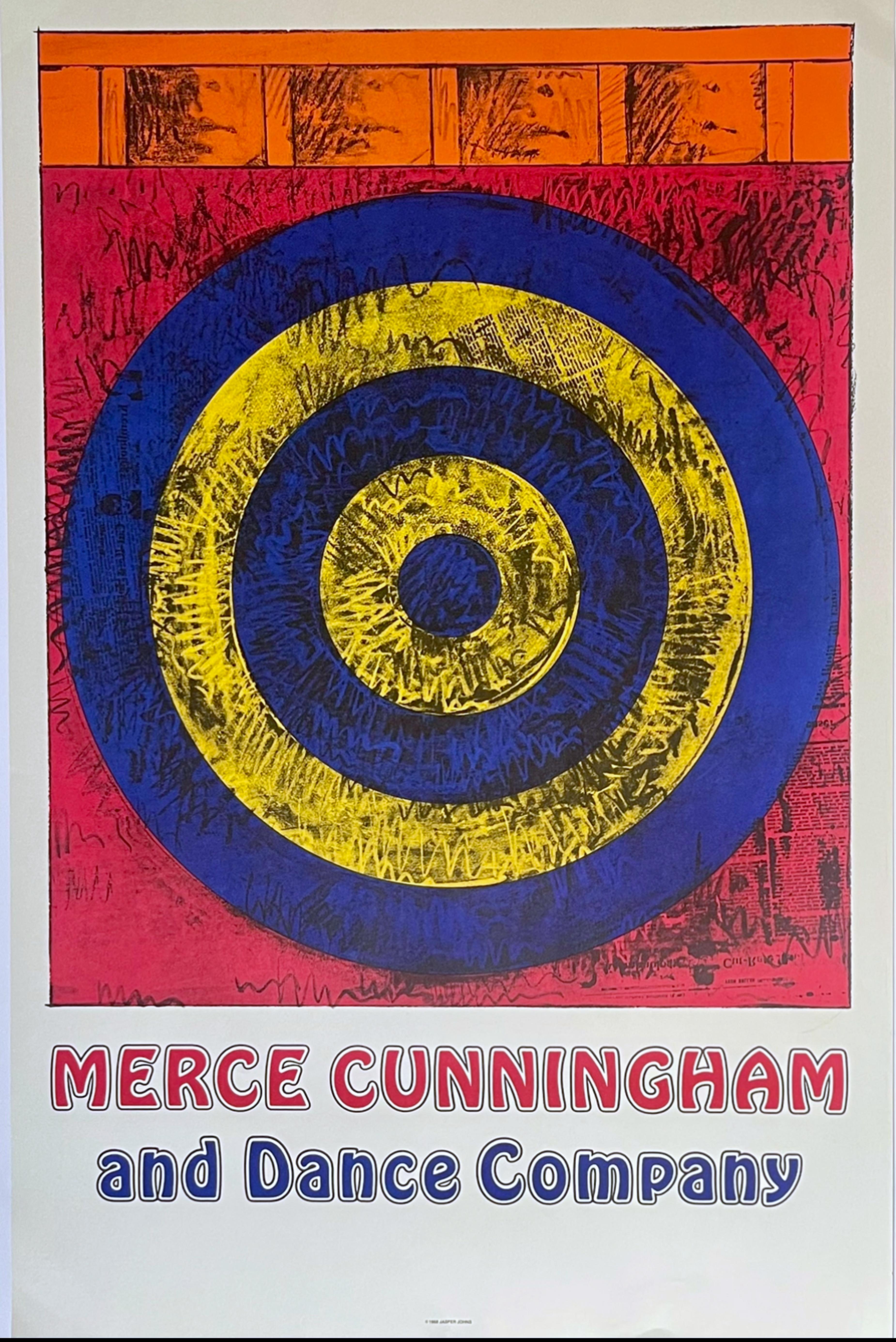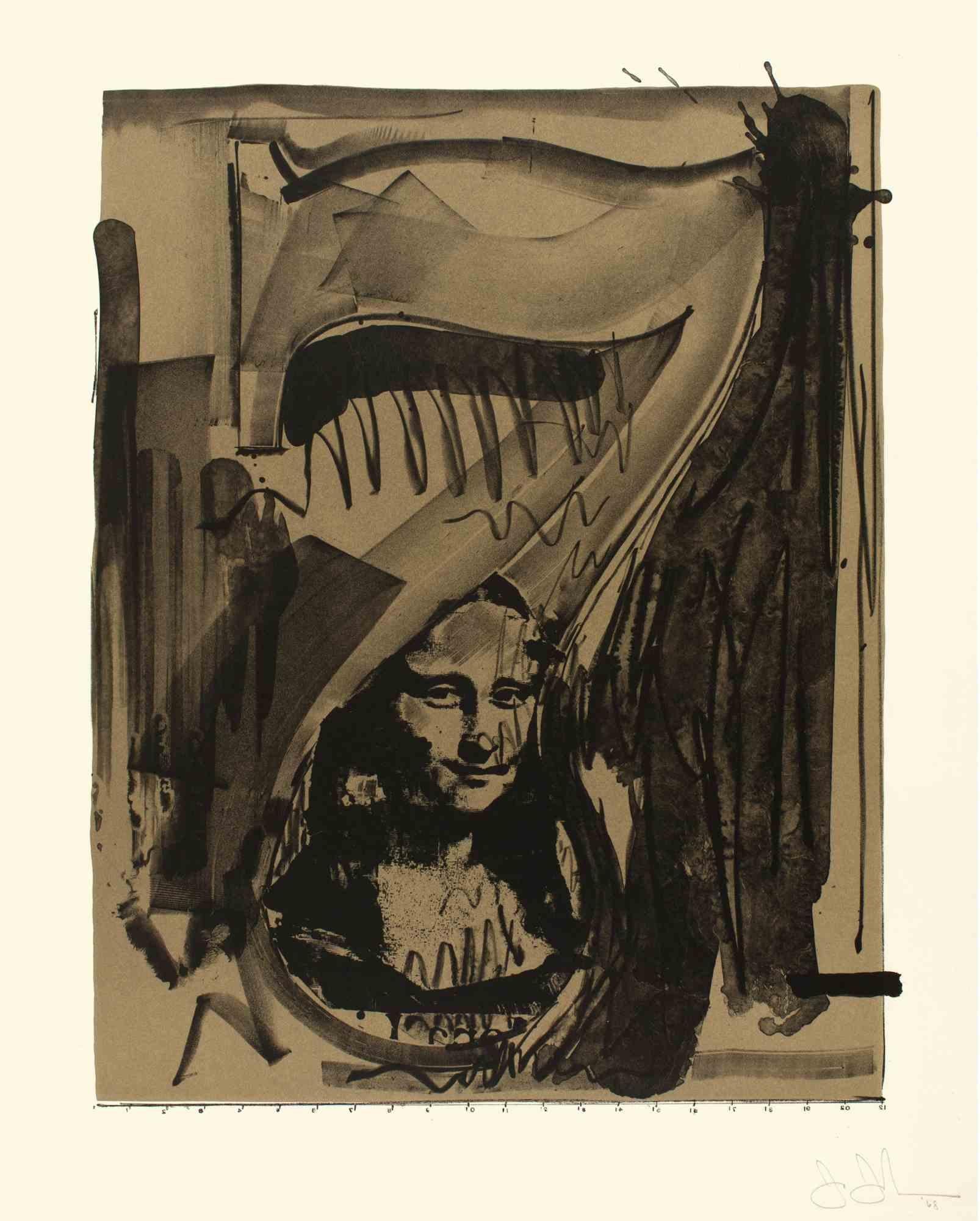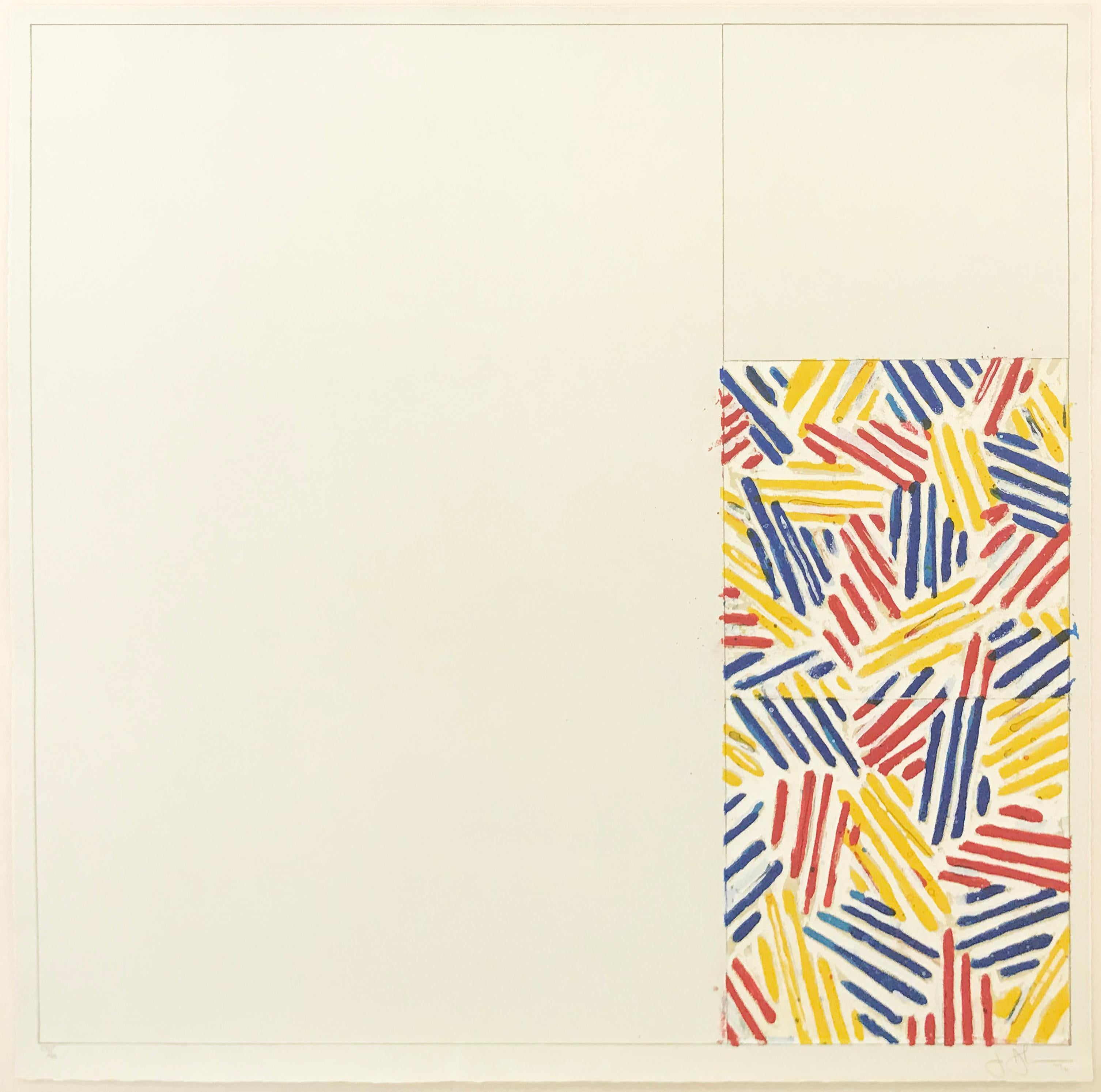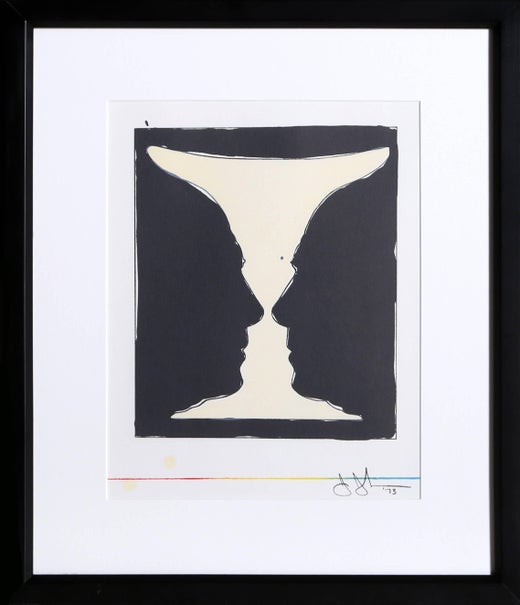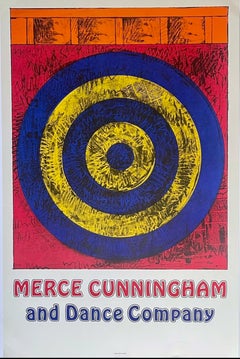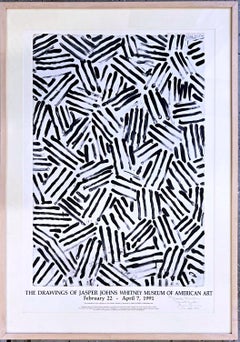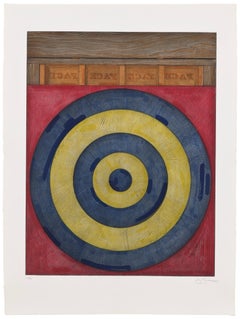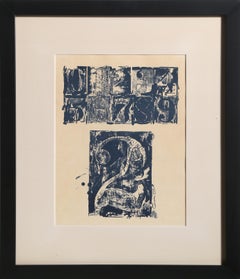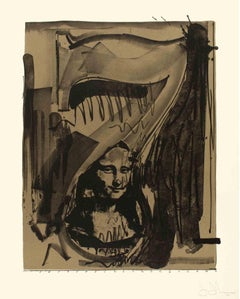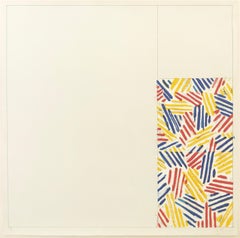Jasper JohnsJasper Johns, Target with Four Faces (ULAE 55), iconic 1960s Pop Art silkscreen1968
1968
About the Item
- Creator:Jasper Johns (1930, American)
- Creation Year:1968
- Dimensions:Height: 46.5 in (118.11 cm)Width: 35 in (88.9 cm)Depth: 2 in (5.08 cm)
- Medium:
- Movement & Style:
- Period:
- Condition:please see additional images of the work in the frame, the signature, and edition number. Ships framed. Jasper Johns signed this work with a red marker, so the signature may appear attenuated which is normal. (see photos).
- Gallery Location:New York, NY
- Reference Number:1stDibs: LU1745214793752
Jasper Johns
Jasper Johns is an American painter, sculptor and printmaker born on May 15, 1930. He eventually became one of America's best known post–Abstract Expressionists and Minimalists.
Johns's name is most often associated with pictorial images of flags and numbers and Pop art subjects that he depicted in Minimalist style with an emphasis on linearity, repetition and symmetry. He completed his first flag painting in 1955, alphabet subjects in 1956, sculpture in 1958 and lithographs in 1960.
Find original Jasper Johns art on 1stDibs.
- ShippingRetrieving quote...Shipping from: New York, NY
- Return Policy
More From This Seller
View All1960s Pop Art Abstract Prints
Lithograph, Offset
1960s Pop Art Abstract Prints
Lithograph, Offset
1990s Pop Art Abstract Prints
Lithograph, Offset
1990s Pop Art Abstract Prints
Lithograph, Offset
1960s Pop Art Abstract Prints
Photogravure
1980s Pop Art Abstract Prints
Lithograph, Offset
You May Also Like
20th Century American Modern Prints and Multiples
Intaglio
1960s Pop Art More Prints
Lithograph
1960s Pop Art Figurative Prints
Lithograph
1990s Pop Art Figurative Paintings
Paper, Lithograph
1970s Abstract Expressionist Abstract Prints
Screen
1990s Pop Art Prints and Multiples
Offset
Read More
Why Jasper Johns Is So Much More Than a Maker of Aloof Pop Art
A retrospective spanning two major East Coast museums demonstrates Johns’s massive role in contemporary art history. © 2021 Jasper Johns / Licensed by VAGA at Artists Rights Society (ARS), NY. Philadelphia Museum of Art Photo Studio; Joseph Hu
Welcome (Back) to the Wild, Wonderful World of Walasse Ting
Americans are rediscovering the globe-trotting painter and poet, who was connected to all sorts of art movements across a long and varied career.


